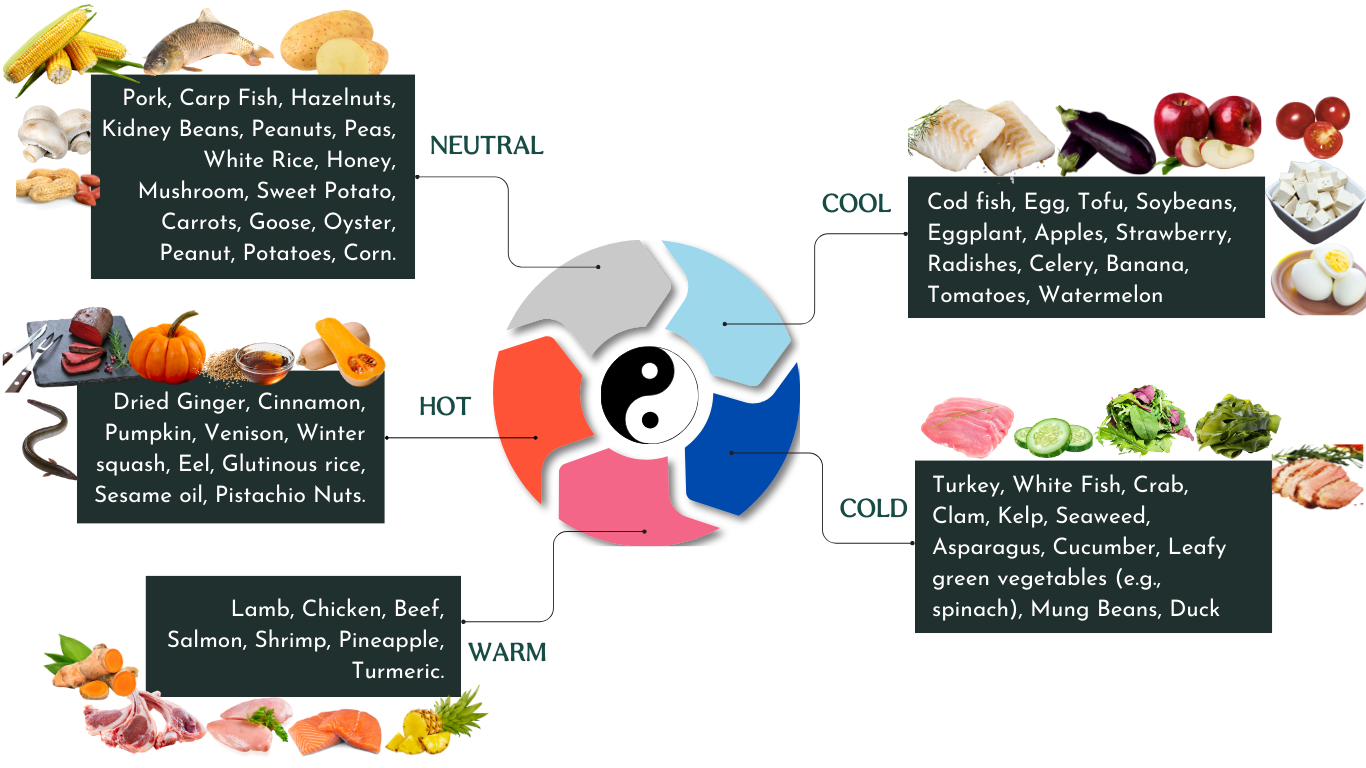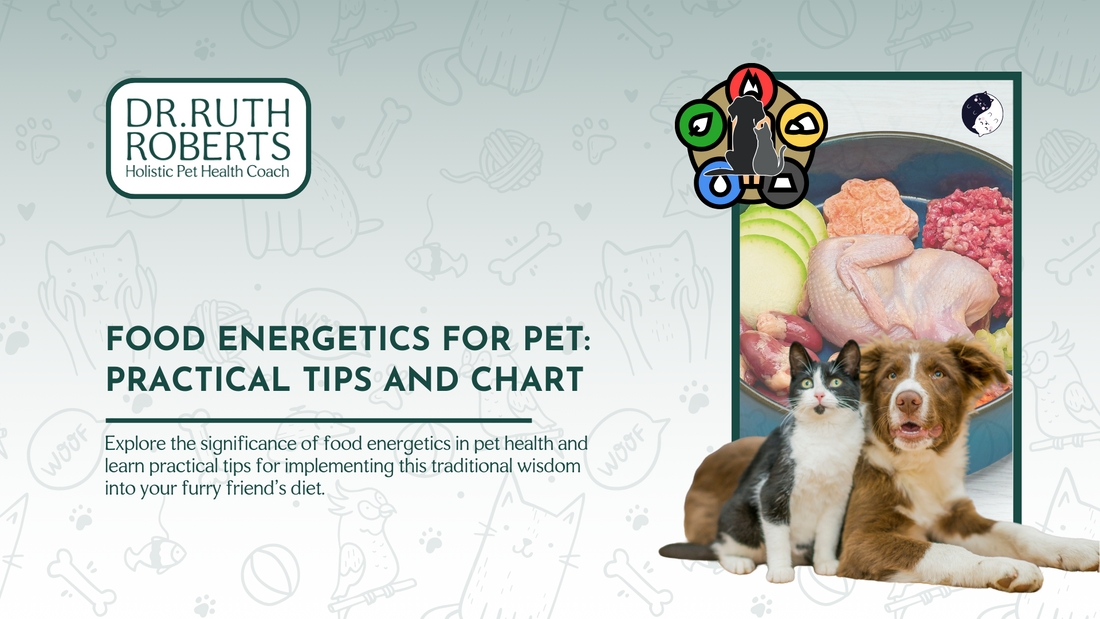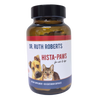In traditional Chinese medicine (TCM) and other holistic healing systems, food energetics play a significant role in maintaining health and treating illnesses. Just like humans, animals can benefit from a balanced and harmonious diet.
Food energetics in pet diets can help achieve this balance by considering the energetic properties of different foods and how they interact with the animal's body. In this blog, we delve into the concept of food energetics, its significance in pet health, and practical tips for implementing it into your furry friend's diet.
What is Food Energetics?
Food energetics is a concept rooted in traditional Chinese medicine (TCM) and other holistic health systems. In Traditional Chinese Medicine (TCM), the concepts of yin and yang play integral roles in understanding the relationship between food and human health. Food is regarded not just as sustenance but also as a form of medicine, capable of exerting various effects on the body.
Central to TCM dietary principles is the classification of foods based on their thermal properties, specifically whether they are considered cold, cool, warm, or hot. Here's a basic breakdown of the energetic qualities of food:
- Hot: Foods that are energetically hot are believed to generate heat in the body and promote circulation. They are often spicy or pungent in flavor. Examples include chili peppers, garlic, ginger, and cinnamon.
- Warm: Warm foods have a milder heating effect on the body compared to hot foods. They help to promote digestion and circulation. Examples include onions, leeks, and most cooked grains.
- Plain: Food that is simple, minimally processed, and free from added flavors, seasonings, or sauces. It's often considered neutral in terms of its energetic properties in traditional Chinese medicine (TCM) terminology.
- Cool: Cool foods have a cooling effect on the body and are often hydrating. They are beneficial for reducing inflammation and excess heat. Examples include cucumber, watermelon, spinach, and most fruits.
- Cold: Cold foods have a strong cooling effect and are often used to clear heat from the body. However, excessive consumption of cold foods may impair digestion and lead to imbalances in some individuals. Examples include ice cream, raw vegetables, and cold drinks.
The energetic properties of food are considered alongside an individual's constitution, health condition, and environmental factors to determine an appropriate diet for promoting health and well-being. However, it's essential to note that while food energetics can be a useful framework for understanding dietary effects, it's not a substitute for evidence-based nutritional science.
Energetics of Food in Seafood and Processed Meat
In traditional Chinese medicine (TCM), the energetic properties of meat can vary depending on factors such as the type of seafood and how it's prepared. Here's a general breakdown:
- Seafood: Seafood can indeed have varying energetic properties depending on the type of seafood and how it's prepared. For example shellfish like shrimp and crab are often considered warming due to their rich, dense nature. White fish like cod or tilapia might be considered more neutral, especially when prepared simply without heavy sauces or spices.
- Cooking Methods: The way meat is prepared can indeed influence its energetic properties. For instance:
- Grilling, frying, or roasting meats tend to increase their warming properties as they concentrate flavors and reduce moisture content.
- Boiling or steaming meats may have a more neutral effect, as they retain more moisture and result in a lighter, less concentrated dish.
Energetics of Food Chart For Pets
Food energetics for pets allows for a personalized approach to nutrition based on each animal's individual needs. Just as in traditional Chinese medicine for humans, pets' constitutions and health conditions can vary widely. By tailoring their diets to specific energetic properties, you can address imbalances and support their pets' overall health more effectively. For instance, pets prone to inflammation or allergies might benefit from a diet rich in cooling foods, while those with cold-related conditions might require warming foods to promote balance.

You can join our CrockPet Diet Course to learn more about food rotation. Also, you can adjust The Crockpet Diet ingredients based on their food energetics, ensuring that your pet receives the appropriate balance of warm, neutral, and cool foods to maintain optimal health. Below is a chart of foods categorized according to their energy properties that are safe for pets:
Practical Tips for Implementing Food Energetics to Your Pet
- Understand the Basics: Start by grasping the fundamental principles of food energetics. While it may seem overwhelming initially, taking the time to study and understand these principles will empower you to make confident choices for your pet's diet.
- Consider Animal Proteins: Animal proteins play a significant role in your pet's diet, typically providing warmth along with essential protein and fats. However, it's essential to note that different animal proteins have varying energetic properties. For instance, turkey and pork lean towards the cooling end, while chicken and beef are warmer. Additionally, fatty fish like salmon offer warmth due to their higher fat content.
- Identify Cooling Foods: Cooling foods, primarily plant-based, can help balance your pet's diet. Fruits and vegetables, particularly those with hydrating properties like cucumbers, are excellent choices. Pay attention to where and how these foods grow, as root vegetables may offer warmth, while leafy greens and most fruits tend to be cooler.
- Consider Seasonality and Climate: Seasonal and climate-appropriate foods can complement your pet's needs. Opt for summer produce like cucumbers during warmer months for their cooling effects, and incorporate winter vegetables like beets for warmth. Similarly, fruits and vegetables from hot climates often offer cooling properties.
- Buy Local: Choosing locally sourced produce ensures freshness, seasonality, and maximum nutrient density. Supporting local farmers not only benefits your pet's health but also reduces carbon footprint and boosts the local economy. Regularly rotating locally grown ingredients in your pet's diet can contribute to a well-balanced and nutritious meal plan.
- Aim for Balance: Strive for balance in your pet's diet by incorporating both warm and cool foods. Regularly rotate ingredients to provide a variety of nutrients and flavors, and observe any patterns to customize your pet's diet accordingly. Remember, moderation and variety are key to maintaining equilibrium and promoting overall health.
Consult with a Holistic Veterinarian: Before making any significant changes to your pet's diet, consult with a holistic veterinarian or a holistic pet health coach who is knowledgeable about food energetics. They can provide guidance tailored to your pet's specific needs and health conditions.
















